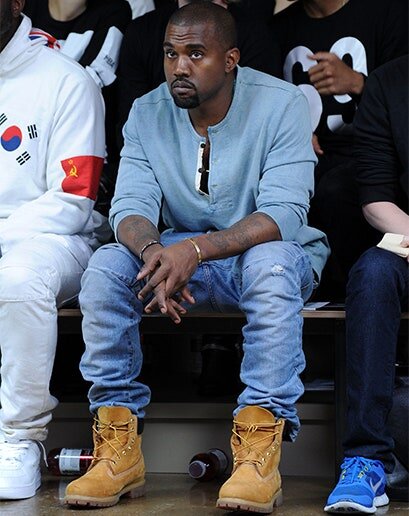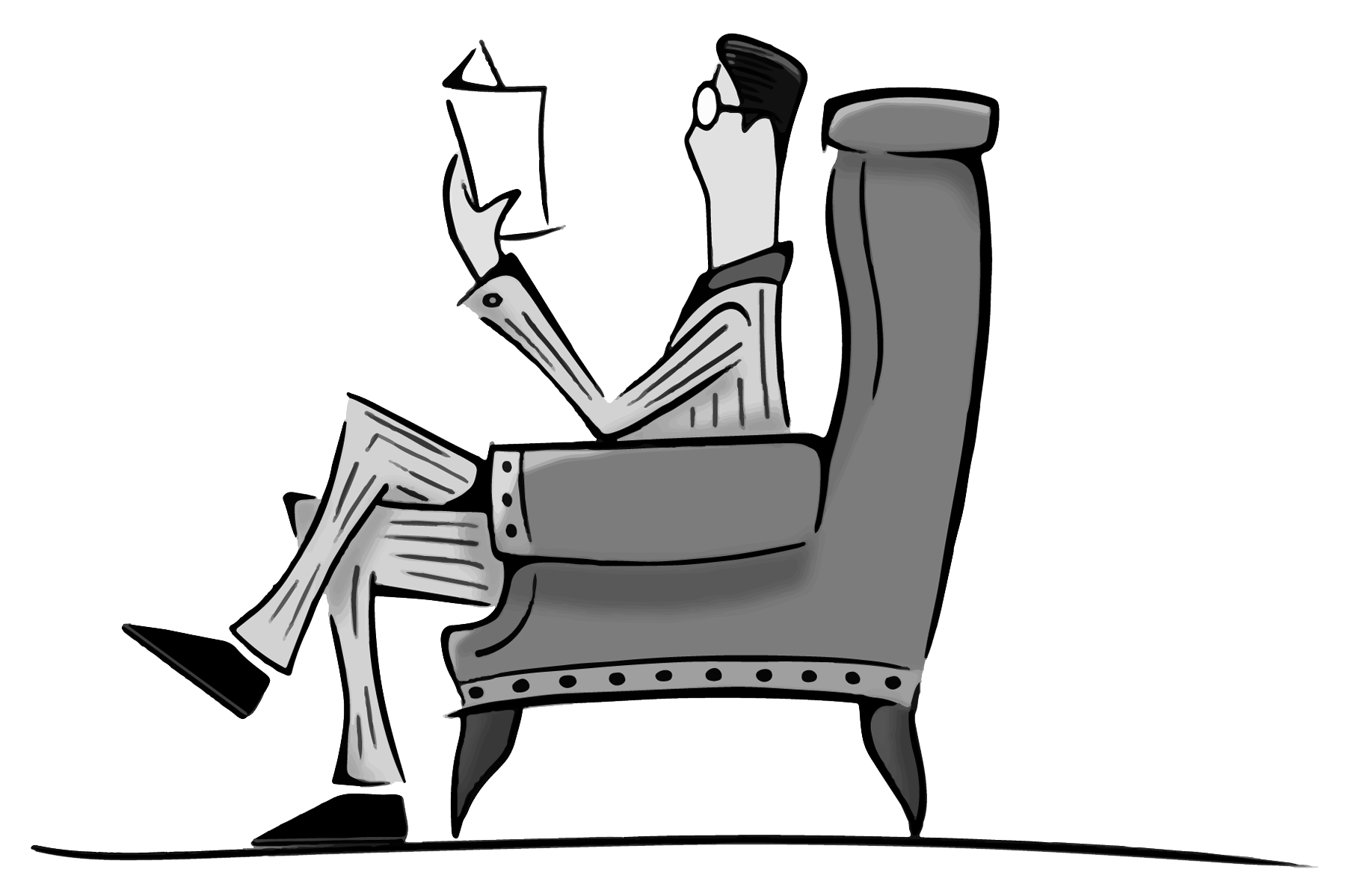NYT Claims Jogging Is Racist. Is There Anything That Isn't?
Courtesy of Chicago Tribune
There is no shortage of racist symbols. If you have unintentionally used one of these symbols or have ever been photographed sporting one, you are participating in racism. If you are unaware that these symbols are racist, or think they aren’t, you are simply demonstrating your internalized racial bias (or ignorance). We all remember Pepe the Frog. Is he a kids’ comic character or a troll-y meme? Neither. He’s a racist dog whistle. The “ok” hand gesture? Horribly racist since 2017. It stands for “white power,” and NPR reports the story under its “National Security” section.
Courtesy of GQ
If you’re keeping track, mainstream outlets such as The New York Times and HuffPo have reported that milk is now a symbol of white supremacy. Our bulwark against serious threats, the Anti-Defamation League (ADL), lists both the steel-toe work boot and the bowl-cut hairstyle as racist (don’t tell the Timbs wearers they ain’t black anymore). Any anti-Antifa messaging is racist, and believing it’s okay to be white is racist.
Recently though, another action has been added to the list of verboten things: jogging. What was once thought of as an innocent way to stay active is no longer acceptable in polite society, writes the Times. We can always count on their watchdog editorial board to sound the alarm on legitimate concerns of racism.
Courtesy of Twitter
Opinionator Natalia Mehlman Petrzela, Ph.D., authors the NYT article entitled “Jogging Has Always Excluded Black People.” On her personal website, Petrzela describes herself as “Scholar. Writer. Teacher. Activist.” While “activist” is indisputable upon an examination of her contributions, her other three attributes remain in question. On May 12th, she informed the uneducated masses that jogging is racist. Let’s break it down.
Opening by describing jogging’s origins as “lily-white” and marketed only to whites, she immediately relates the activity to the recent Ahmaud Arbery shooting. Regarding reactions to the shooting among members of the black community, she writes:
“Black runners recounted their own routines, intended to deflect the sort of suspicions that turned deadly for Mr. Arbery: steering clear of certain neighborhoods, going out only in daylight, wearing an Ivy League sweatshirt to broadcast respectability.”
Courtesy of Nunes Magician
Petrzela is quick to make claims but provides no evidence to support them. Without evidence, one can only assume she’s referring to the outrage-mob of voices on Twitter. Which members of the black community have claimed to reroute their jogging path and change clothes for the sake of respectability? Is Petrzela claiming that black joggers are now avoiding “white” neighborhoods? Are these folks rerouting into “safer” areas, like low-income neighborhoods or inner cities? I’ve seen no one preferring to jog through downtown Detroit or hopping online to replace their compression shirts for Cornell sweaters. Where is her evidence of these reactions? The passage is obviously anecdotal and merely sets the stage for the article’s main points. For now, let’s move on.
Petrzela continues:
“Black people have not only been excluded from the sport — one survey by Running USA found under 10 percent of frequent runners identify as African-American — they’ve also been relentlessly depicted as a threat to legitimate, white joggers.”
First, the obvious question one feels led to ask is, “excluded by whom?” Who is excluding black people from leaving their houses and running outside, and how are they being excluded? I found myself being prompted to ask these questions repeatedly throughout the piece, to no avail.
Second, one might be curious to know what percentage of black runners the left would find acceptable. Currently, blacks represent around 13% of the overall U.S. population. Is less than a tenth of the running population (8%, to be exact) really that far from parity? Especially when, as the article states, the rate has surged from under 2% as recently as 2011. Does Petrzela demand perfect racial representation in every sport? If that’s the case, the NBA is abysmally failing to meet the required quotas for white, Asian, and Latino representation.
Furthermore, the whole point of the WSJ article she cites is that blacks are bucking the current trend of runners because, as stated in the headline, they are participating more often in “marathons, half-marathons and 5Ks.” As in, black participation is growing. Petrzela, how could you mislead us like that?
Lastly, blacks are portrayed as a threat to white joggers—it must be “true” because she repeats it twice. Where are (or were) African-American runners being depicted as a threat to white joggers? Petrzela provides no evidence for this claim, aside from the following misused quote:
“The African-American periodical The Crisis wrote in 1985 of how blacks were viewed by white runners: ‘the homeless and downtrodden are most times a “disgusting” irritation to the jogging, orange-juice drinking yuppie who must step over or past them on his or her way to the office.’”
Courtesy of Google Books
For one thing, did you see the word “white” or “black” in that quote? Read it again to make sure. I’ve done the hard work for you and read the entire article Petrzela is referring to. In fact, the piece does not mention “white” or “black” or “race” whatsoever. How odd.
Written by contributing editor Norman Riley, the 1985 piece was in the “Music” section and was written to highlight two current artists. The quote in question was referring only to the contrast between the “haves and have nots” in Manhattan at the time—no mention of sports, white oppressors, or racism. Petrzela really had to reach to make this connection.
Norman Riley jumps right into the scene without setting up a menagerie of anecdotes to spin a narrative of a black proletariat class under the thumb of sinister white masters. Although The Crisis is a black-centric magazine, at the time it did not obsess over race—a lesson Petrzela and the Times could stand to glean from it.
Furthermore, the quote mentioned homeless people, not blacks. Why is it that Petrzela is so quick to label the homeless Riley referred to as black? I cannot speak on her thought process, but that sounds like textbook implicit bias to me. It reminds me of the similar Freudian slip Joe Biden made last year when he said, “poor kids are just as bright as white kids.” Isn’t that a bit… racist? Food for thought, Petrzela.
She continues:
“The United States is only for the first time sending black female marathoners to the Olympics in 2021, while the competitive amateur and recreational levels of the sport remain overwhelmingly white.”
By Fernando Frazão/Agência Brasil - Cropped from Flickr version. Courtesy of Wikipedia
It may be true that not many blacks have competed in women’s marathoning, but I believe the author wants us, her readers, to suspend our disbelief and forget the constant abundance of victories in Olympia by black athletes. No one can deny the domination and celebration of American blacks in the Olympic games. Take, for instance, the U.S. victories in the 4x400 meter relays across both men’s and women’s teams at the 2016 Olympics: 100% black athletes. Move over Simone Biles (the most decorated American gymnast of all time)—you no longer exist.
On the other hand, American white men and women are highly underrepresented as medalists in the Olympic track and field, but no one has a problem with this. If white athletes cannot keep up, they shouldn’t make the cut. The Olympics, by its very nature, is a pure meritocracy, favoring the absolute elite competitors in a sport. Aren’t the top athletes, majority black, rising to the top of their respective fields due to their excellence? Is Petrzela claiming that top athletes of color are kept from competing simply because of that color?
Courtesy of USA Today
It’s clear that the U.S. team decided it would rather win medals than have a lily-white roster. Who are the people or institutions that have kept elite black athletes from competing at the top level up until 2021? Surely the public would have been alerted if this were the case. Surely the Times, in rooting out racism, would be the first on the case. I think a full investigation should be conducted. Someone get Comey on the phone.
The author rebuts by claiming that white Americans had no problem watching black athletes on television as long as they were not performing the same activities on the streets of white neighborhoods. Again, Petrzela, where is your evidence?
As she concludes the article, Pertzela returns to the issue of the day:
“Mr. Arbery’s death and the ensuing outcry is in some ways the latest data point in the sick mash-up of structural racism, gun violence, and vigilantism that’s become a hallmark of American life.”
Did you see what she did there? It was a sly trick, but Petrzela used a bait-and-switch tactic, pinning gun violence and racism on the experience of simply being an American. Racism and gun violence, she claims, are exclusive trademarks of America.
In other words, if you believe in America, that it was not founded in 1619 on slavery but on a set of Judeo-Christian principles in 1776; if you also believe in the right to protect yourself (read, the Republican platform)—you are a cog in the massive machine of systemic oppression and, ergo, part of the problem. You might as well be complicit in the murder of Mr. Arbery. All of these things add up to the overarching, left-wing narrative that pits us against one another.
This article is yet another pipe dream from the outlet of “all the news that’s fit to print,” The New York Times. Petrzela’s “Jogging Has Always Excluded Black People” is an altogether unfactual and unfounded narrative.
As commentator Ben Shapiro explained on his Thursday show, there is a supply and demand problem with racism. There is a far greater demand for racism by mainstream outlets and the left in order to underscore their narrative than there is supply. America does not have a racism surplus, but a deficit. When we broaden the definition of racism (and therefore dilute it) to encompass more and more benign examples, we get sophomoric articles like this one. Petrzela ends with the claim that running itself is still racist:
“[R]unning... has never been, and still is far from, an equal-opportunity endeavor.”
The reader can only draw the conclusion that there is an unseen, unknown hand of oppression moving throughout our society, and it can only be seen through “woke” goggles. This ethereal force has the agency to reinforce the systemic racism in the minds and steps of all, keeping blacks from donning their athleisure wear and going outside.
Yes, the completely autonomous and independent action one takes can somehow be influenced and controlled by evil, outside forces floating all around us. The hand of oppression is so endemic, so ingrained in the American condition that it keeps blacks from going outside to place one foot in front of the other. If we continue to listen to actresses like Petrzela and others in the mainstream media, racial tensions will never heal but be in a constant state of debilitating outrage or paralyzing fear. We, as independent thinkers, must continue to call out malicious and divisive articles and ideas, or we will continue to stay divided.









